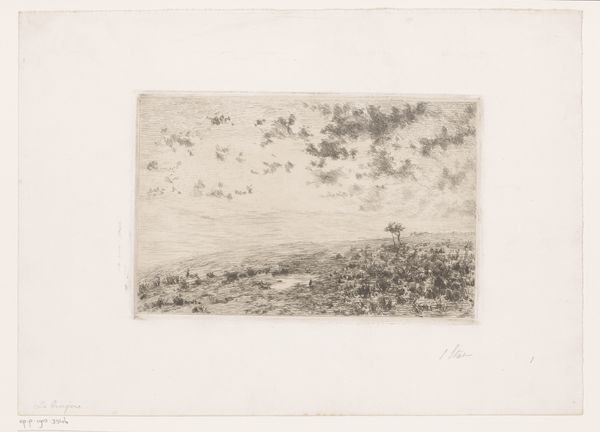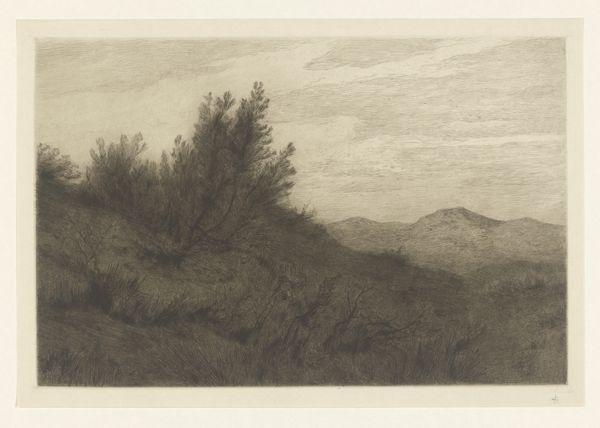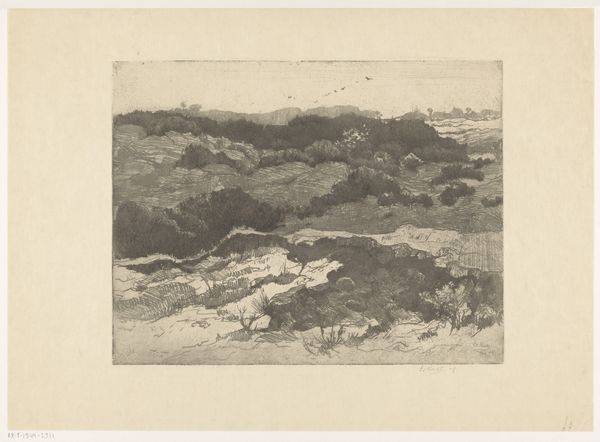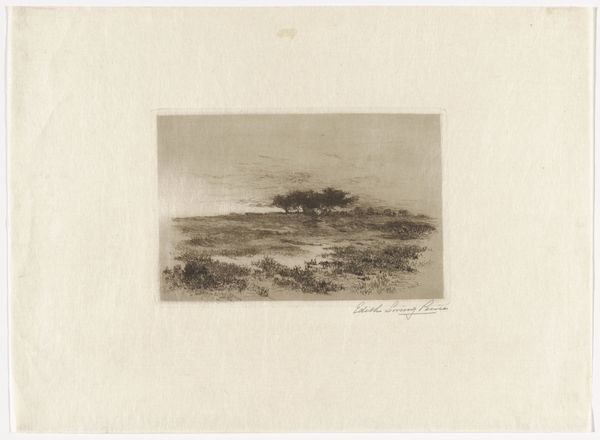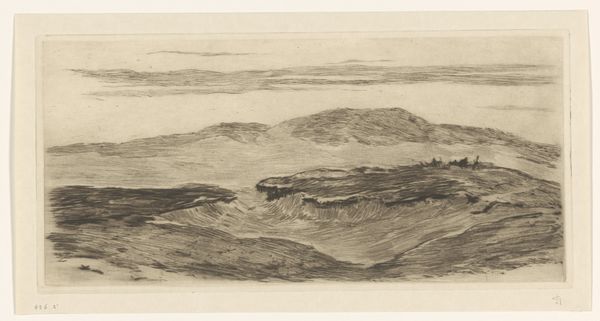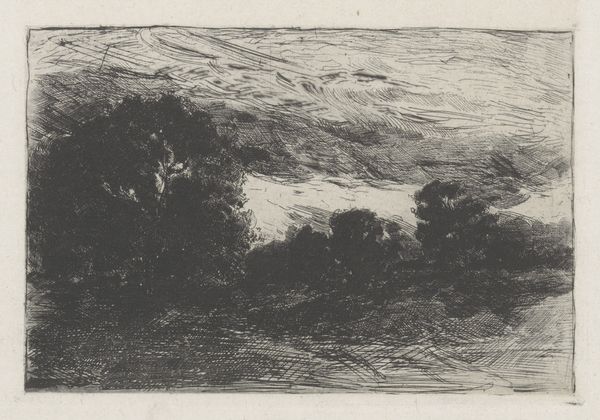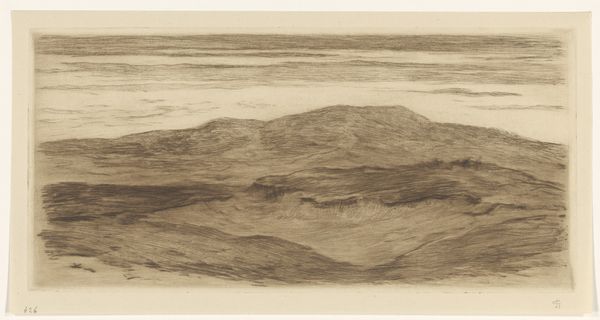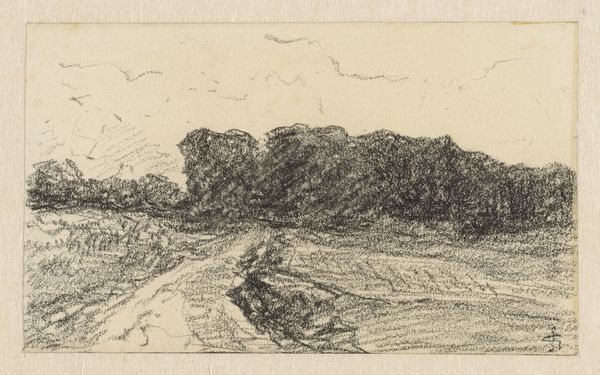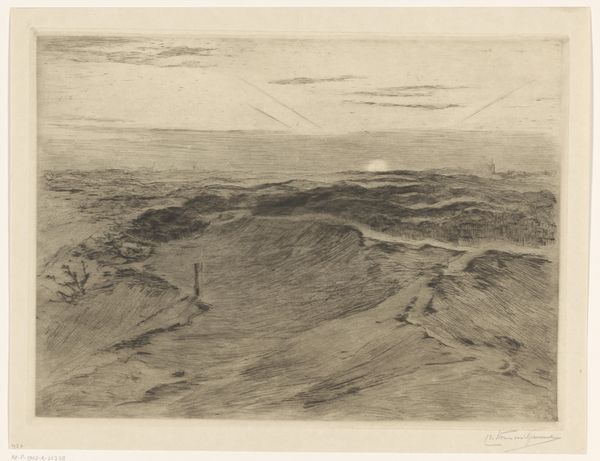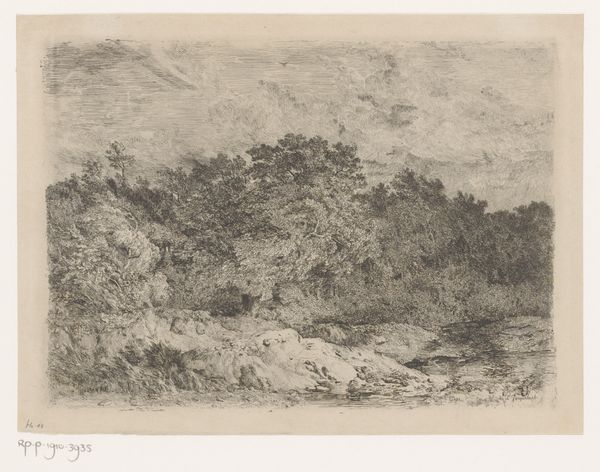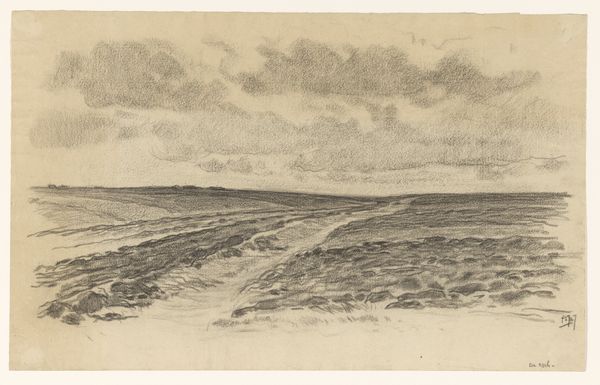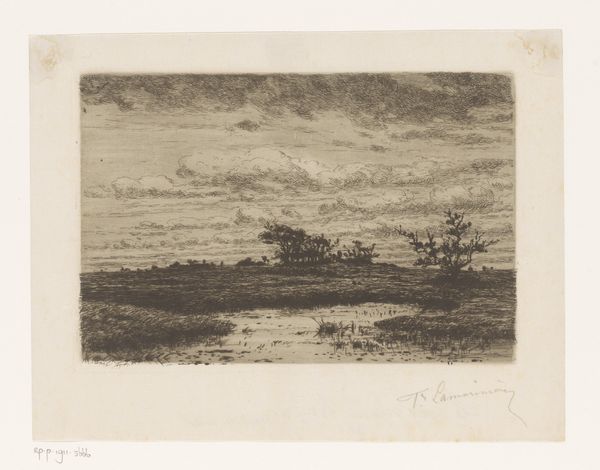
print, etching, plein-air
# print
#
impressionism
#
etching
#
plein-air
#
landscape
Dimensions: height 150 mm, width 212 mm
Copyright: Rijks Museum: Open Domain
Editor: So, here we have "Dune Landscape near The Hague" by Carel Nicolaas Storm van 's-Gravesande, probably created between 1851 and 1902. It’s an etching, a kind of print, and the palette is very muted. I'm struck by how still and quiet it feels. What do you see in this piece? Curator: I see a powerful statement about the evolving role of landscape in Dutch identity. During this period, artists moved away from idealized depictions and embraced more direct, personal responses to the land, enabled by the plein-air movement. This print, while small, engages with a larger cultural project: defining "Dutchness" through its unique geography. The muted tones actually emphasize the raw, untamed quality of the dunes, almost challenging the notion of a perfectly picturesque landscape. Editor: Interesting, I hadn’t thought about landscape as a kind of…political statement? Curator: In a way, yes. Think about the rise of nationalism in the 19th century. Artists played a key role in constructing a shared visual language around national identity. The dunes, with their austere beauty and vulnerability to the sea, offered a powerful metaphor for the Dutch character: resilient, grounded, and deeply connected to the land. Did the Impressionistic style factor into shaping those narratives? Editor: Definitely, the looseness of the etching gives it a feeling of immediacy, as if the artist was capturing a fleeting moment, and the atmospheric perspective enhances that mood. That makes sense within the context of nationalism that you mentioned, the national pride probably benefited from a more grounded, accessible approach to art! Curator: Precisely! And consider the Rijksmuseum, where this piece is housed. Institutions like the Rijksmuseum actively curated and shaped narratives about Dutch art and history. The inclusion of works like this reinforces the idea that even seemingly simple landscapes can be imbued with complex cultural meaning. Editor: I hadn't considered the role of the museum in shaping these narratives either, that's given me a whole new perspective on the artwork and how landscape was viewed at the time. Thank you. Curator: A pleasure. It is a valuable skill to consider art within the frameworks of institutional structures and power relations.
Comments
No comments
Be the first to comment and join the conversation on the ultimate creative platform.
